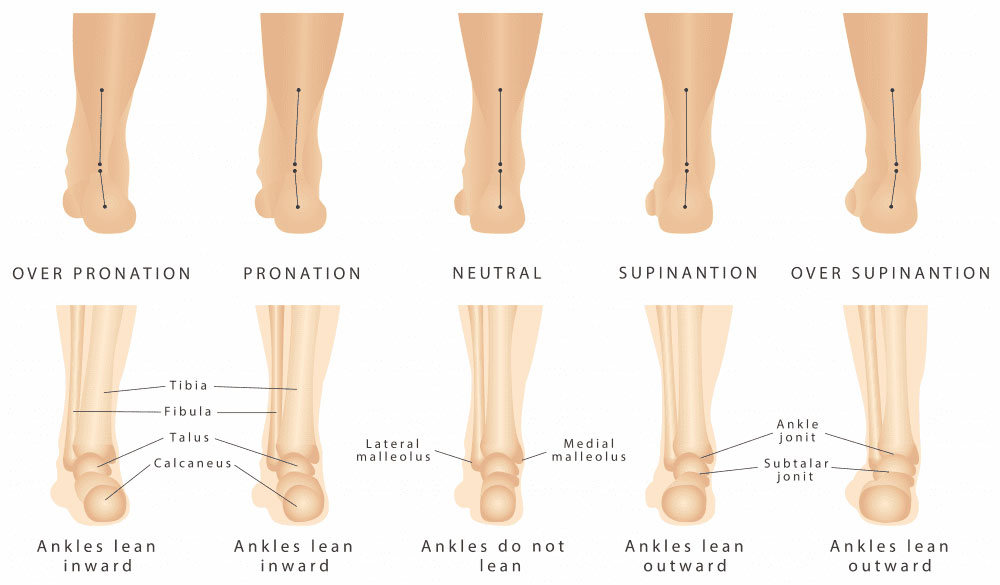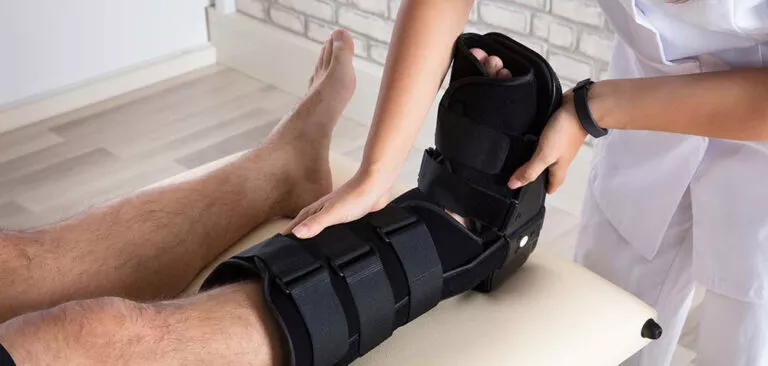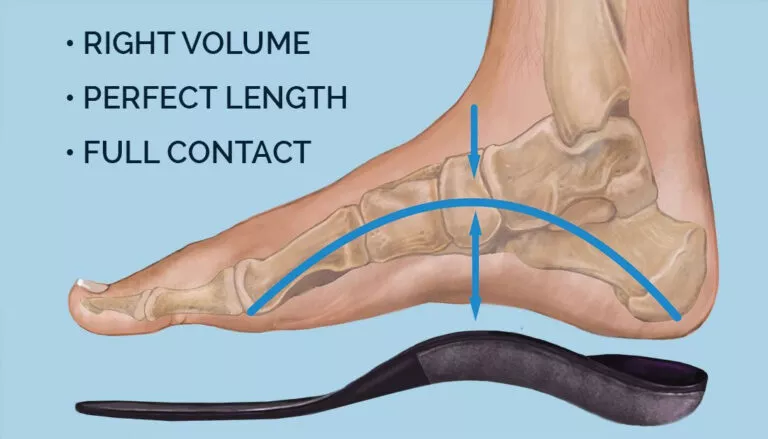DIFFERENT TYPES AND APPLICATION OF CUSTOM ORTHOTICS
WHAT ARE CUSTOM ORTHOTICS?
Do you have aching feet? Has your podiatrist suggested Orthotics? Orthotics are shoe or heel inserts that a podiatrist prescribes.
People often confuse inserts with orthotics, but they both are different.
Inserts – You can buy them from stores without a prescription. They provide cushioning and support to your feet.
They are usually made of materials such as gel, plastic, or foam. Inserts fit into your shoes but they’re not custom-made for your feet requirements
They provide support in the arch along with extra cushioning on the heel, around the toes, or even your entire foot. Inserts help in making your shoes more comfortable, but they aren’t designed to correct foot problems.
Orthotics – They are different from inserts and are prescription based medical devices. You would wear orthotics inside your shoes which help in correcting biomechanical foot issues like problems with how you walk, stand, or run.
They are also helpful with providing relief from foot pain caused by medical conditions such as diabetes, plantar fasciitis, bursitis, and arthritis. Orthotics are even capable of avoiding surgery to fix flat feet issues.

WHAT ARE DIFFERENT TYPES OF ORTHOTICS?
Orthotic devices are of different types such as shoe inserts which help in correcting an abnormal, or irregular, walking pattern. They are known as arch supports and these orthotics allow people to stand, walk, and run more efficiently and comfortably.
If you are facing any foot related problems it is advised to visit a podiatrist. They would sometimes prescribe orthotic devices that are beneficial in correcting an abnormal walk, or gait, as well as for patients post-surgery.
Orthotic devices are custom made as per your need and specifications like shape and size, materials. They fall in three main categories:
- Designed to change foot function
- Protective in nature
- Combine functional control and protection
Orthotics are of different types and solve various problems:
Rigid Orthotics – These are designed to control function. These are used for walking or dress shoes. These orthotics are prepared using a mold after the podiatrist takes a plaster cast or other kind of image of the foot.
Rigid orthotics help in controlling the motion in two major foot joints which lie directly below the ankle joint and may improve or end strains, aches, and pains in the legs, thighs, and lower back.
- Designed to control joint function
- Made of firm materials such as plastic or carbon fiber
- Require very little alteration to your shoe size
- Extended along the sole of the heel to the toes or ball of the foot

Soft Orthotics – Soft orthotics absorb shock along with increasing balance and take pressure off your uncomfortable or sore spots. These orthotics are also made from a mold after a podiatrist takes a plaster cast or some other kind of image of the foot. Soft orthotics are effective for diabetic, arthritic, and deformed feet.
- Designed to absorb shock, increase balance and release pressure
- Constructed of soft, compressible materials
- Might need extra space in shoes or prescription footwear
- Worn against the sole to the foot, extending from heel to toes
Semi-Rigid Orthotics – These orthotics help in providing foot balance for walking or participating in sports. At times, diverse sports require different kinds of semi-rigid orthotics. The classic semi-rigid orthotic is prepared by stacking layers of soft material, reinforced with more rigid materials.
- Designed to provide dynamic balance
- Consists of layers of soft material, covered with rigid material
- Made as per requirement for sports and the athlete
Orthotics for Children – Children are sometimes prescribed orthotics to treat flatfoot in-toeing or out toeing disorders. Orthotics are recommended by podiatrist for children suffering from foot deformities. These orthotics might be started soon after children start walking, to stabilize the foot. This can be placed directly into a standard shoe or an athletic shoe.
- Athletes often use orthotics to mitigate pain while they are training and competing.
- Although over-the-counter orthotic inserts help people with mild symptoms they usually are not helpful in correcting the wide range of symptoms. These can be corrected using customized foot orthotics as they are made to fit a person according to their specific requirement.

APPLICATION OF CUSTOMIZED ORTHOTICS
Podiatrist would recommend various orthotics such as:
- AFOs (Ankle foot orthotics) – There include rigid AFO, Hinged AFO, Dynamic AFO, prefabricated AFO, and silicon AFO. These are beneficial in preventing conditions such as foot drop or reduced ankle stability. The ankle foot orthotics depend on various factors like function, the level of mobility and your condition.
- Insoles – Insoles are made as per your requirement. They are casted and manufactured in the lab. The insoles are manufactured from various materials like EVA, polypropylene and carbon fiber. Material used for insoles depends on many factors such as your weight, the reason for the insoles, and type of footwear you would be using with insoles. These can be helpful for plantar fasciitis, knee pain, back pain, foot / ankle pain, and flat feet.
- Drop foot splints – Splints are of different types and help in supporting a drop foot. These can be prefabricated, custom made or silicon based. Podiatrist will carefully evaluate your condition for the most appropriate brace to suit your needs and lifestyle.
- KAFOs (Knee ankle foot orthotics) – KAFOs are used to control the movement of the knee and ankle all together. KAFOs are useful in treatment of people suffering with neurological conditions such as Cerebral Palsy, Multiple Sclerosis, Spina Bifida and traumatic brain injury.
- Lycra garments – These are available as full suits, vests, shorts, sleeves, gauntlets, socks or gloves. Lycra is beneficial for adults and children suffering from neurological conditions like cerebral Palsy, stroke, head injury and multiple sclerosis. They have various benefits such as improved functional ability, improved posture, improved joint position and pain relief.
- Knee braces – These are helpful in a wide range of conditions including knee ligament injuries, sports injuries, arthritis and patella dislocations. Knee braces provide relief from pain, allow you to continue with normal everyday life, return to contact sports, skiing etc. and stabilize the knee.
- Night splints – They help to maintain support to limbs while you are sleeping at night. This prevents muscle tightness, improves sleeping posture or reduces painful spasms.
ORTHOTIC CARE
You should be cautious about using the orthotics for maximum benefit. Some important thing to keep in mind are:
- Wear orthotics with shoes that work well with them
- Carry your orthotics with you whenever you buy a new pair of shoes
- Wear socks or stockings same as you plan on wearing when you shop for new shoes
- Do not miss your follow-up evaluation of the functioning of your orthotics
- These are important to make sure that your feet and orthotics are functioning properly together.
OUTLOOK
Orthotics are one part of a treatment regimen followed by a podiatrist for many foot and ankle concerns. Podiatrists would often recommend orthotics in conjunction with these treatments. Orthotics help in providing more support and cushioning in important areas of the feet, such as the heel or ball of the foot. Orthotics are not for everyone and might be expensive if you are not insured.
If you or anyone you know is suffering from foot problems, our expert providers at Specialty Care Clinics will take care of your health and help you recover.
Call us on (469) 545-9983 to book an appointment with our specialists.
